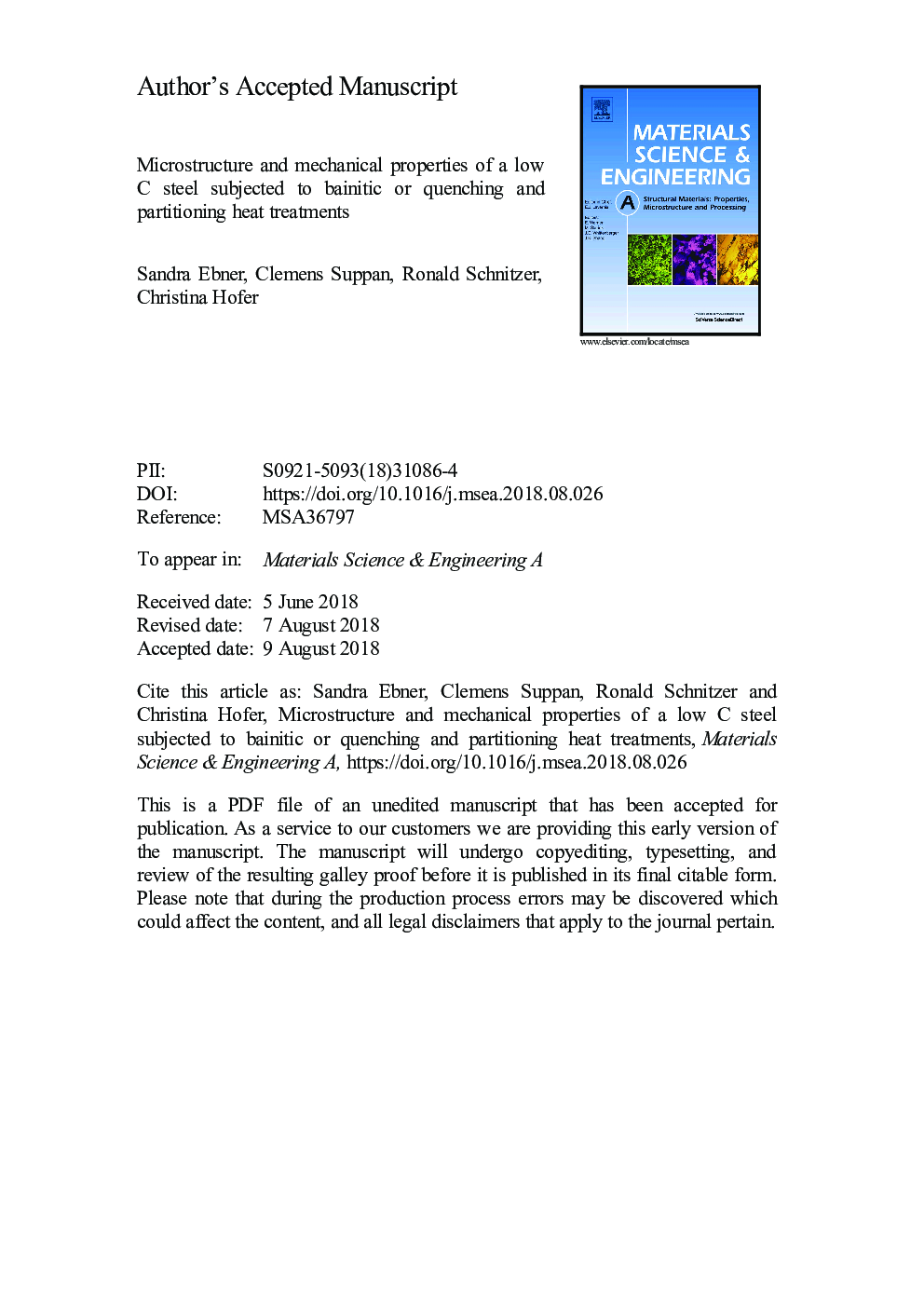| Article ID | Journal | Published Year | Pages | File Type |
|---|---|---|---|---|
| 7971516 | Materials Science and Engineering: A | 2018 | 26 Pages |
Abstract
The third generation of advanced high strength steels represents a promising approach to meet the requirements of the automotive industry. A profound knowledge of the mechanical performance and the possible limitations of the different steel grades is necessary to achieve the best properties for a given application. In the present work, the main differences between transformation-induced plasticity (TRIP)-aided bainitic ferrite (TBF) and quenching and partitioning (Q&P) heat treatments was studied on the same low C steel. The mechanical properties obtained from tensile testing were correlated to the microstructure, which was investigated by scanning electron microscopy and dilatometry. In a first step, the influence of varying process parameters was evaluated. The results revealed that both heat treatment concepts offer an interesting combination of strength and ductility. While TBF heat treated samples achieved higher uniform elongation, superior reduction of area was gained by Q&P cycles, which is assumed to be beneficial for local formability.
Related Topics
Physical Sciences and Engineering
Materials Science
Materials Science (General)
Authors
Sandra Ebner, Clemens Suppan, Ronald Schnitzer, Christina Hofer,
